I spent some of my vacation geeking out on the geological glamor of the landscape around me. All around the region are landscapes shaped by fault block escarpments, very large volcanic eruptions, glaciers. The rocks that tell these stories are all around, little shrouded by soils or vegetation.
Of all these great forces, the one I know best is the glacier, since the glaciers that shaped my home turf in the White Mountains left calling cards that I recognize in glacial polish and U-shaped valleys.
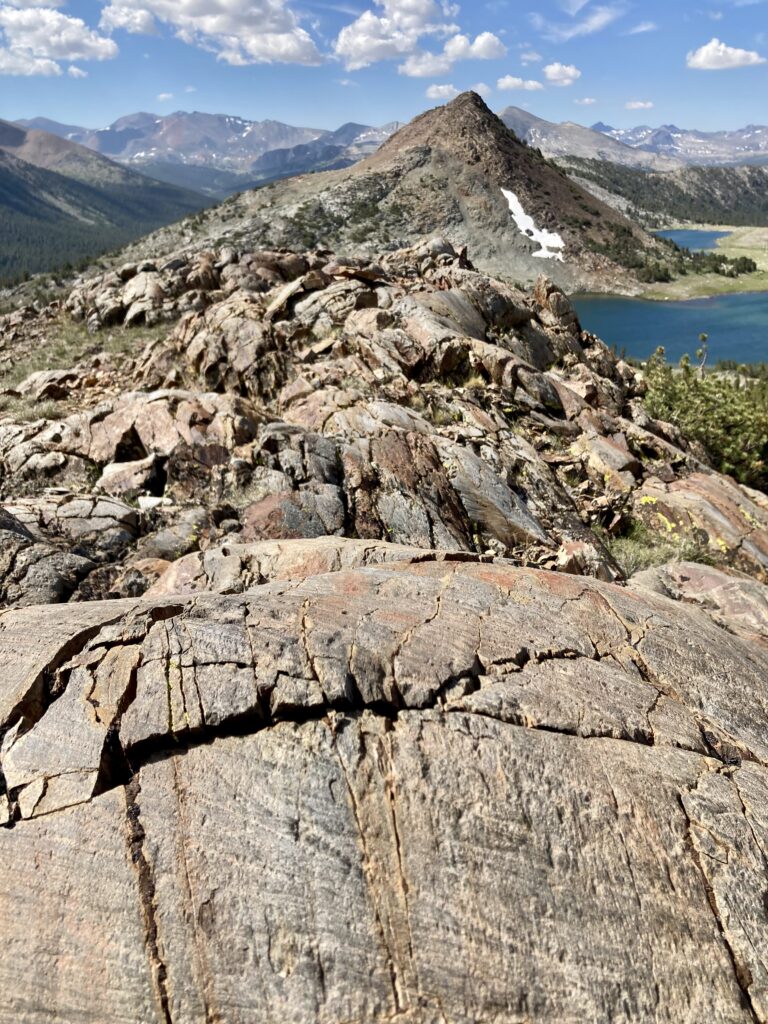
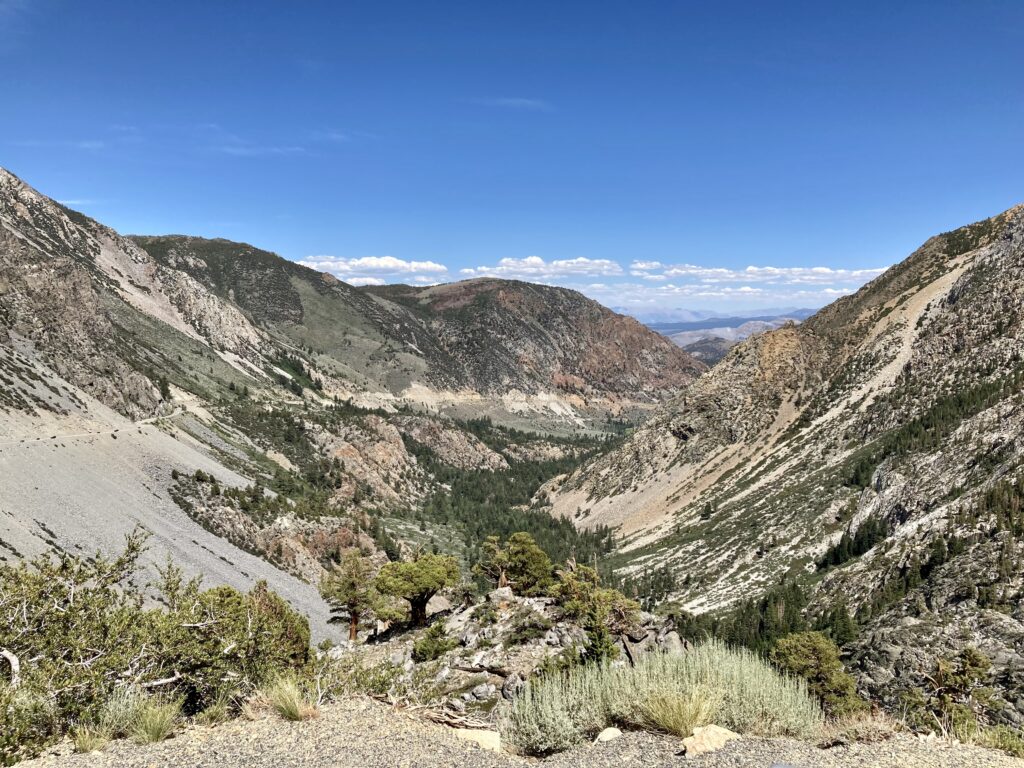
More exotic to me are the bare rock faces that expose the complex history of layers, folds, uplifts, and inclusions.
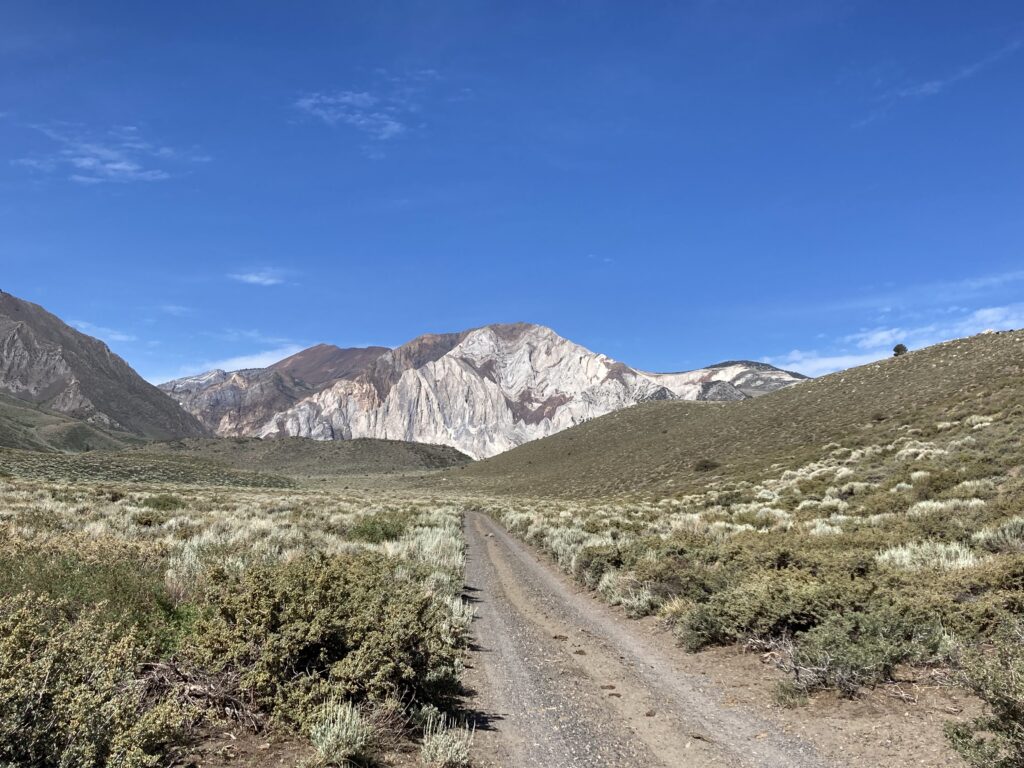
Volcanic features are not prominent in the landscapes I see day to day, and I’m fascinated by the Long Valley Caldera formed 760,000 years ago with the emptying and collapse of a massive magma chamber.
On a previous trip we visited the Glass Mountain obsidian dome which is all that remains of the actual volcanoes. This trip we headed into the volcanic table land where the dust, ash, and pumice ejected 760,000 years ago fell straight back down into the caldera and welded together in a rock layer called Bishop tuff.
Glaciers crept down from the mountains to the West, but ice never filled the caldera, so the tuff formations on the volcanic tableland are fractured by fault lines but were never polished by ice.
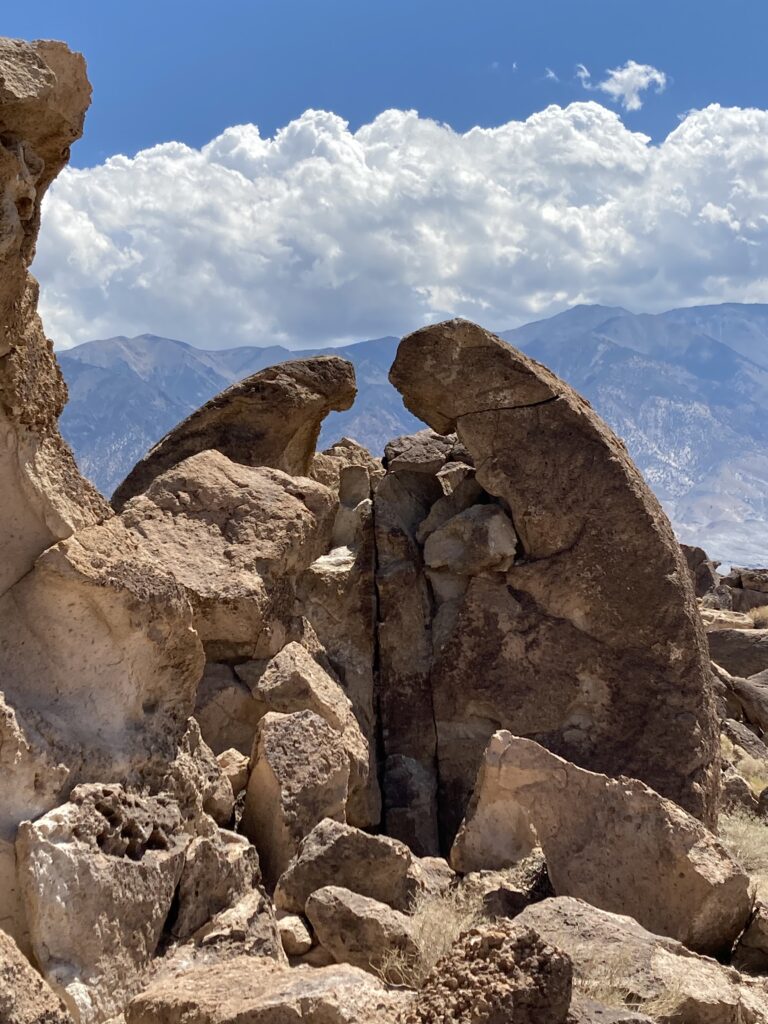
Geology, chemistry, and physics combine in strange and wonderful ways on planet Earth. On the shore of Crowley Lake (actually a reservoir used by Los Angeles to manage the water siphoned from the Owens River into the Los Angeles aqueduct), the tuff has eroded into arches and columns so regular it’s hard to believe they aren’t made by humans.

According to geologists from UC Berkeley, the columns and arches were formed during the eruption 760,000 years ago when cold water or snow percolated down through the hot ash until it turned to steam and flashed up again. This reaction created tougher tuff (sorry) that resists erosion by the waves and waters of Crowley Lake. The lake level is low now, so this particular grove of columns stands with their feet on the beach and not in the water.
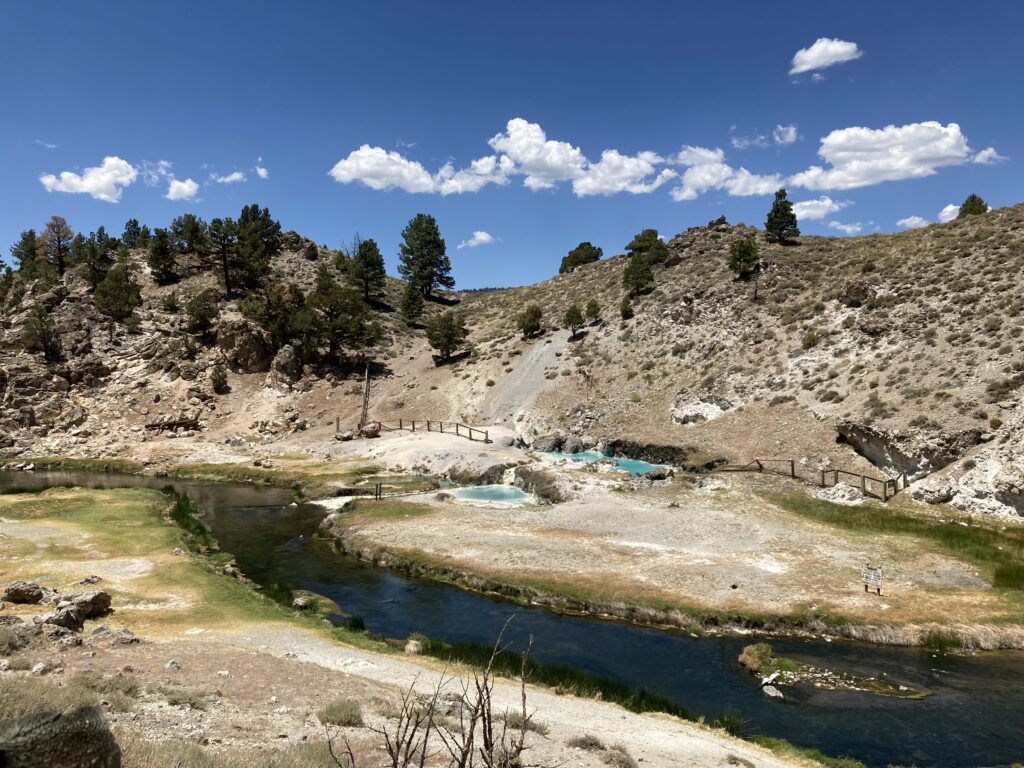
This volcanic legacy isn’t just ancient history. The area is rife with warm and hot springs, including these boiling pools that empty into aptly named Hot Creek. Mammoth Lakes hosts a geothermal electricity generation complex powered by a deep, hot reservoir. Fumaroles continue to emit carbon dioxide— sometimes in sufficient amounts to kill trees or people. The US Geologic Service has a close eye on the area after a 10 inch bulge in the caldera came along with a 1980 earthquake. That road built in the 1980s that makes another connection between the town and the highway? Today it’s called “Mammoth Scenic Loop”, but internet legend (Wikipedia) relates that the original name was “Mammoth Escape Route”.

GiGi and I LOVE your pictures!!! Places we are NEVER going to!!!